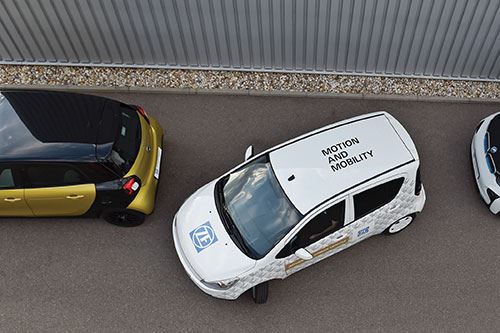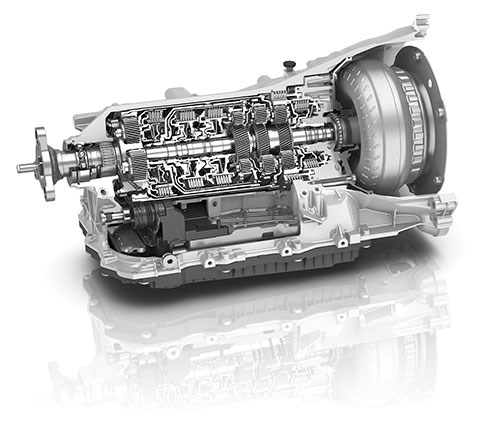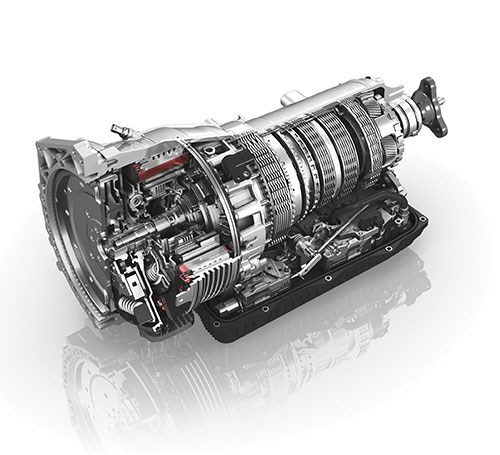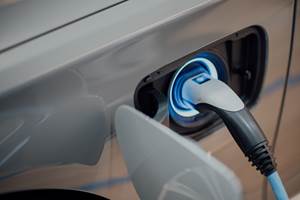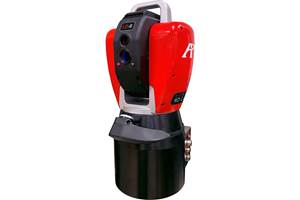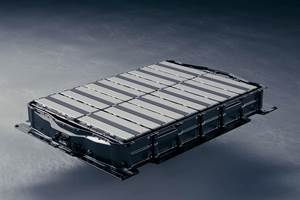Gears and the Future of Mobility
What will happen to things like step-gear transmissions as we transition to electrified vehicles? We go to Germany to find out.
If you want to talk about gears, you’d be hard-pressed to find a company that’s more engrained in the technology than what was known, 100 years ago, as “Zahnradfabrik Friedrichshafen GmbH.” The first word, quite simply, means “gear factory.” The second is the location of that factory, in a town on the shores of Lake Constance in southern Germany.
And, as we are still in a historical mode here, it is worth noting that the company was a spinoff of another company with a name that you’ll recognize without any translation: Luftschiffbau Zeppelin GmbH. Yes, that’s zeppelin, while the first word references airships, as in “the building of.” The purpose of Zahnradfabrik Friedrichshafen was, according to historic documentation, to develop, test and manufacture “gears and transmissions for aircraft, motor vehicles, and motor boats.”
As you may have deduced, today that company is known simply as “ZF.”
A New Kind of SUV
Having acquired U.S.-based automotive supplier TRW Automotive in May 2015, ZF has become the third-largest automotive supplier in the world, with 134,000 employees located in some 230 facilities across the globe. It started production in Brazil in 1958, the U.S. in 1979 and China in 1993. Overall, it now operates in some 40 countries. In 1965 it started producing multi-ratio transmissions for passenger cars—as in “automatic transmissions”—and 50 years later, it is a leader in the technology. In 2014, it had €30 billion in sales, of which it invested approximately five percent in R&D.
Which is all good. But what about the electrification of the vehicle? What is this going to do to a company that is literally based on gear manufacturing? So we go to a test facility outside of Potsdam to find out.
And there we discover a vehicle that ZF has engineered, the “Smart Urban Vehicle.” It is a subcompact electric vehicle propelled by what’s called the “eTB,” or “electric Twist Beam,” axle, with 40-kW motors on both the rear right and left wheels that provide axle torque of 1,400 Nm (1,033 lb-ft), 21,000 rpm, and a top speed of 150 km/h (93 mph). The vehicle has a front axle that allows turning angles of up to 75°, which means there is ultra-maneuverability, especially for parking. The vehicle also has a sensor/electronics setup that permits the car to be maneuvered into a parking place by someone—nominally the driver—who is standing outside the vehicle and controlling it through a smart watch. Why is this important? Because being able to park vehicles without occupants means that they can be put into smaller spaces, which is reckoned to be important for the urban environment of the future.
What’s more, the Smart Urban Vehicle communicates with the cloud; its PreVision Cloud Assist driver assistance function uses cloud-contained information to actually adjust things like the speed that the vehicle goes through a turn to optimize the velocity for purposes of maintaining electric energy in the battery. If you’ve ever been in a car with lane-keeping assist, where the system “nudges” you via a steering wheel input to stay in your lane, take that experience and add throttle adjustment and then multiply the whole thing and you get a sense of the Smart Urban Vehicle in action.
Stefan Sommer, CEO of ZF, describes the Smart Urban Car—which is admittedly a concept, but one that is drivable—as “a starting point from which concepts for future mobility can be derived very specifically.” Which, given that it is an electric vehicle, one might think that the future doesn’t bode well when it comes to things like gear-filled automatic transmissions… or does it?
Accelerated Evolution
For one thing, you’ve got to get to the future, which means doing things now. And when it comes to transmissions, ZF has been producing eight-speed automatics since 2009. It has two production facilities for the transmissions, Saarbrücken, Germany, and Gray Court, South Carolina. Through the end of 2014, 7.5 million units have been produced. The plants have an annual capacity of more than 2.6 million units. The 8 hp, as the eight-speed is known, is now in its second generation, one that has even better fuel efficiency performance (by approximately three percent) than the original. And ZF has supplied the 8 hp to more than 600 different volume-production applications for cars and SUVs with a longitudinal powertrain setup. Clearly, the eight-speed transmission is providing lots of business for ZF.
And in 2013, it became the first supplier of a nine-speed transmission. While the 8 hp lends itself to cars with rear-wheel-drive, the 9 hp is for front-transverse drivelines. What’s interesting to note is that ZF had not been producing front-drive transmissions for a number of years. But based on market research—which indicates there is going to be continued growth in vehicles using that powertrain arrangement—ZF executives knew that it had to get back into the transverse transmission.
What’s notable about the 9 hp is that, thanks in large part to the in-house developed and built electronic control unit, it is possible to manage the gear spread such that the vehicle is kept in a fuel-efficient operating zone. For example, ZF compared the nine-speed with one of its own six-speeds and determined that at a constant speed of 120 km/h (74.6 mph), the nine-speed shows as much as a 16 percent improvement in fuel efficiency. In addition, the 9 hp is capable of being used in start-stop powertrain systems, which provide even more fuel efficiency. However, there is still the question of more full-vehicle electrification, even if it will take time for vehicles, at least in volume, to get to the point of the Smart Urban Vehicle.
Accumulated Experience
And here the enormous experience of the Zahnradfabrik personnel comes to the fore. One of the things ZF has been doing is designing many of its products in a modular way. This means that there is, in effect, plug-and-play capability among various related components.
In the case of the 8 hp, modularity leads to an eight-speed transmission for a plug-in hybrid vehicle. That’s right: ZF engineers have used the 8 hp as the basis to produce a transmission for a hybrid. While conventional transmissions are predicated on being driven solely by combustion engines, the plug-in hybrid transmission was developed taking electric driving capability into account. So the engineers had to make sure that drag torque between the transmission and the engine is minimized, and that they would be able to reduce the torsional vibrations of the combustion engine. This is achieved by installing two dampers, one of them speed adaptive.
So for the eight-speed plug-in there is an electric motor integrated right into the housing. It has a peak output of 90 kW. There is 45 kW of constant power. The motor is a permanent-field synchronous machine; it is cooled by atomized oil.
Depending on the battery system that is part of the overall architecture, the eight-speed plug-in transmission is capable of providing a vehicle with as much as 50 km (31 miles) of pure electric range. The top speed that can be achieved with it is 120 km/h.
There is an inevitability that there will be an increasing amount of electrification of the powertrain. That said, in June 2015, the National Research Council published Cost, Effectiveness and Deployment of Fuel Economy Technologies for Light-Duty Vehicles. The authors assessed the various impacts of automotive systems and subsystems as they relate to meeting the 2025 standards for Corporate Average Fuel Economy (CAFE) and greenhouse gas emissions proposed by the U.S. Dept. of Transportation’s National Highway Traffic Safety Administration and the U.S. Environmental Protection Agency. In effect, the CAFE for vehicles will be 54.5 mpg, or about double what the requirement was in 2012.
Planetary Popularity
On the subject of transmissions, the authors write, in part, “The most popular transmission design is the planetary automatic transmission (AT), which is expected to remain the dominant architecture in the U.S. in the 2025 timeframe; however, the market will transition from today’s typical six-speed AT to eight- to 10-speed AT designs.”
Which is to say that, as the transition occurs, and as we proceed forward in time, they will still be making plenty of gears at ZF.
Related Content
Ford Partners With Rockwell Automation to Advance EV Program
The companies will jointly collaborate on assembly tooling designs and architectures that will increase speed to market.
Read MoreArch Cutting Tools Acquires Custom Carbide Cutter Inc.
The acquisition adds Custom Carbide Cutter’s experience with specialty carbide micro tools and high-performance burrs to Arch Cutting Tool’s portfolio.
Read MoreNew Laser Technology in Non-contact Optical Dimensional Metrology
LADAR technology from API sets a new standard in non-contact optical dimensional metrology for manufacturing industries.
Read MoreHow is an EV Battery Made?
Everyone talks about batteries, but how are they produced? Here’s the long and short (circuit) of it.
Read MoreRead Next
3 Mistakes That Cause CNC Programs to Fail
Despite enhancements to manufacturing technology, there are still issues today that can cause programs to fail. These failures can cause lost time, scrapped parts, damaged machines and even injured operators.
Read MoreThe Cut Scene: The Finer Details of Large-Format Machining
Small details and features can have an outsized impact on large parts, such as Barbco’s collapsible utility drill head.
Read More
.jpg;width=70;height=70;mode=crop)
